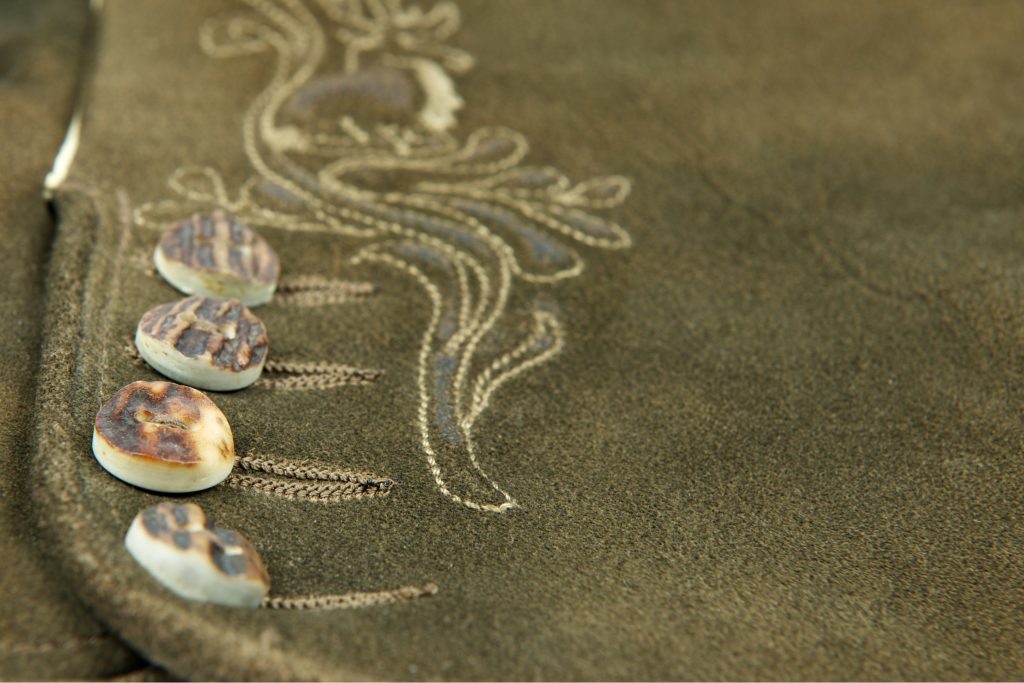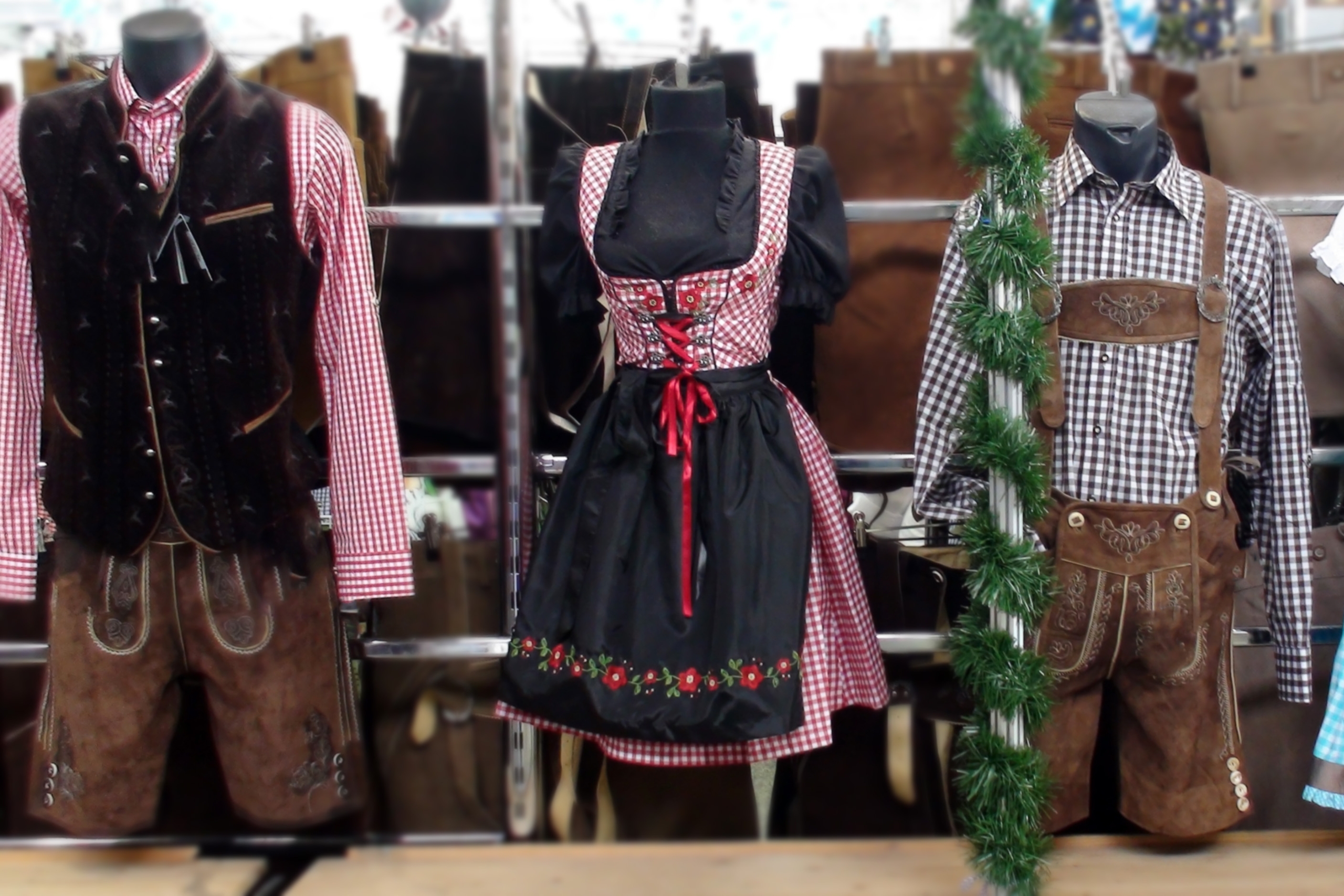Lederhosen, traditional Bavarian leather clothing primarily worn by men, have long been an emblem of German culture and heritage. This article will delve into the materials used and the meticulous manufacturing process that goes into creating these iconic garments. Craftsmanship and tradition play a vital role in Lederhosen production, with every piece being meticulously handcrafted to ensure the highest quality. From the selection of premium leather to the intricate embroidery and stitching, each step is guided by age-old techniques passed down through generations. The durability and timeless appeal of Lederhosen can be attributed to the attention to detail and pride that artisans take in their work. As a result, these leather trousers have become synonymous with Bavarian traditions and are often seen at cultural events and festivities. In an increasingly modern world, the continued production of Lederhosen reinforces the importance of honoring and preserving cherished customs. The craftsmanship involved in the manufacturing process ensures that Lederhosen remains a symbol of Bavarian identity and a testament to the enduring traditions of the region.
Leather Selection and Quality
High-quality leather is needed to make genuine Lederhosen. This is crucial since the leather used in traditional Bavarian clothes affects their longevity, comfort, and attractiveness. Deer, goat, and cowhide leather are used to make Lederhosen, each with its particular qualities.
Lederhosen are often made from deer leather, which is supple and elastic. Durability and wear-resistance make it excellent for long-lasting clothes. Deer leather enhances the authenticity and attractiveness of traditional Bavarian clothing with its unique texture.
Goat leather, which is strong and durable, is also utilized. Goat leather is water- and abrasion-resistant, making Lederhosen durable for outdoor activities. It also has a distinctive grain pattern that improves clothing appearance.
Lederhosen are made from cowhide, the most popular leather. Its thickness and strength make it suited for heavy-duty usage, and its smooth texture gives clothing a polished and stylish finish.
Some conditions must be met while choosing quality Lederhosen leather. Leather thickness matters because thicker leather is more durable and wear-resistant. The leather should be smooth and defect-free for a faultless result. Finally, Lederhosen comfort and flexibility depend on suppleness.
Cutting and Pattern Making
Lederhosen manufacture begins with pattern creation and cutting. These stages are essential for making the Bavarian costume.
Pattern creation involves creating templates for Lederhosen components’ forms and sizes. These designs aid leather cutting. Traditional measures use body proportions for a proper fit. Following classic design principles, front and back panel, waistline, pocket, and strap templates are carefully made.
Once designs are made, cutting starts. Very precise and detailed work is needed. The templates let skilled artisans cut leather items accurately and to customary specifications. Since leather must be cut neatly and properly, sharp equipment and blades are used.
Cutting Lederhosen leather requires consideration of grain and quality as well as fit and style. The garment’s appearance and longevity depend on the leather’s texture, thickness, and stretch, which qualified artisans can assess.
Lederhosen pattern creation and cutting need accuracy. These expert workers mold raw materials into Bavarian-style garments.
Sewing and Assembly Techniques
Lederhosen, Bavarian leather trousers, need careful stitching and assembly to last. Hand-sewing and machine stitching are used, with the former being crucial to traditional workmanship.
The Lederhosen stitching procedure starts with cutting leather parts following the design. These pieces are then hand-stitched with thick waxed threads or machine-stitched using a leather needle. Hand-sewing creates sturdy, visible stitches that enhance the garment’s appearance.
Saddle stitching is used to attach leather parts. This procedure secures and strengthens the seam by running the needle through both portions simultaneously. To increase garment durability, stress areas are strengthened by stitching.
Adding buttons to Lederhosen is essential to assembly. These horn or metal buttons are carefully sewed into leather using thread that suits the clothing. Button placement is crucial to trousers fit and function.
Lederhosen often include embroidery on the suspenders or bib. The garment’s aesthetic is enhanced by skilled craftsmen hand-stitching these beautiful pieces onto the leather.
Embellishments and Decorations
Embellishments and decorations play a crucial role in enhancing the aesthetic appeal of Lederhosen, the traditional Bavarian clothing. These decorative elements not only add visual interest to the garment but also serve as reflections of the wearer’s regional style and cultural heritage.
Traditional embroidery patterns are commonly used to adorn Lederhosen, with each region carrying its own unique motifs and techniques. These intricate patterns are often inspired by nature, incorporating motifs such as leaves, flowers, and animals. The embroidery is typically done using bright, contrasting colored threads that stand out against the dark leather.
The significance of these decorative elements goes beyond mere visual appeal. They help to identify the wearer’s regional affiliation and serve as symbols of their cultural heritage. For example, in Alpine regions, the embroidery may feature mountain motifs, while areas near lakes and rivers may showcase water-themed embellishments. These regional distinctions allow individuals to proudly display their roots and give Lederhosen a personal touch.
Furthermore, the art of embroidery itself holds cultural significance in Bavarian tradition. Passed down through generations, these techniques represent a sense of craftsmanship and pride. The intricate detailing and precision involved in the embroidery process not only contribute to the aesthetic value of Lederhosen but also act as a testament to the skill and dedication of the artisans who create them.
In conclusion, embellishments and decorations play a vital role in the visual appeal of Lederhosen. Traditional embroidery patterns, motifs, and techniques not only enhance the garment’s aesthetic but also reflect regional styles and cultural heritage. These decorative elements serve as symbols of identity, showcasing personal affiliations and contributing to the rich cultural tapestry of Bavaria.
Quality Control and Finishing Touches
Lederhosen manufacture requires strict quality control. These steps guarantee the finished product fulfills requirements and surpasses client expectations.
Inspection of completed Lederhosen is vital to product quality. Stitching, embroidery, and leather quality are carefully checked by experts for defects, fit, and workmanship. The inspection procedure finds and fixes flaws to guarantee only high-quality Lederhosen reach the market. It also helps the company retain its reputation for quality and workmanship.
Lederhosen are polished and improved after passing examination. Polishing leather surfaces improves luster and softens the material for comfort. Product durability and lifetime are maintained via conditioning.
Finally, the Lederhosen’s packaging must reflect its excellent quality as it’s the first impression shoppers get. Proper packing protects products during shipment and exudes elegance and attention to detail.
Customers obtain well-made and perfect Lederhosen due to strict quality control and inspection. Attention to precision and finishing touches like polishing, conditioning, and packaging show the dedication to providing the best Lederhosen.

Conclusion
In conclusion, preserving traditional Lederhosen craftsmanship and manufacturing techniques is of utmost importance for preserving cultural heritage and ensuring the longevity of this iconic garment. Initiatives focused on training new artisans and passing down traditional skills play a crucial role in ensuring the continuation of this craftsmanship. By supporting local craftsmen and businesses, we can sustain the legacy of Lederhosen production and contribute to the preservation of this unique cultural tradition. In a rapidly changing world, it is vital that we value and promote traditional craftsmanship, as it holds the key to our cultural legacy and identity. Let us come together to celebrate and support the craftsmanship behind Lederhosen, ensuring that future generations can marvel at and appreciate this cherished piece of our cultural heritage.

